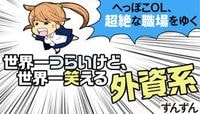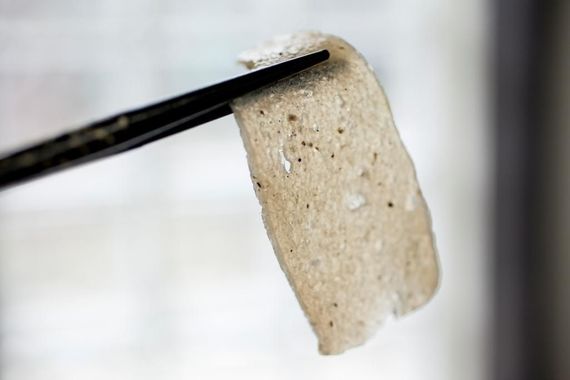
Japanese cuisine is included in UNESCO’s list of Intangible Cultural Heritage, and between 2012 and 2013 the number of Japanese restaurants abroad almost doubled to 55 thousand establishments. Furthermore, in the past year the combined export value of the country’s agricultural, forestry and fishery sectors rose to 500 billion yen (according to research by the Ministry of Agriculture, Forestry and Fisheries).
Japanese food products have established a reputation as delicious, safe and reliable, and their success abroad has been reliant on the strategies used to market them. Mr. Wataru Ishibashi, living in Omutashi city in Fukuoka prefecture, certainly knows this to be the case.
Mr. Ishibashi is the manager of a long-established konnyaku (known as ‘devil’s tongue’ in English) store ‘Ishibashiya’ that has been in business since 1877, and is helping spread Japanese food culture across the world. He appeared on a program on Japan’s TBS network on the 22nd of November this year, and has an uninterrupted 37 years’ experience producing konnyaku.
Konnyaku: Known and despised as ‘devil’s tongue’ in English
Konnyaku first made its way to Japan from China during the Heian period. Nowadays it is an integral ingredient in Japanese cooking, used in dishes such as ‘oden’ and stews. However, there are practically no cultures outside of Asia in which konnyaku is traditionally consumed.
In spite of these circumstances, Ishibashiya made their debut on the world stage. The first country they began exporting to was Singapore in 2002. They continued to expand their export markets, and have reached the stage where they are exporting to over 20 countries including the USA. However, they had to overcome a lot of difficulties to get to this stage.
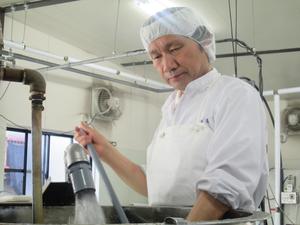
More than ten years ago Mr. Ishibashi visited a number of restaurants in New York for business purposes, but initial reactions were not good. Both the appearance and texture of konnyaku are uncommon in European and American food culture, and he was often met with the response “this is devil’s tongue!” when he presented his konnyaku to them. As is the case with the majority of Japanese food products, konnyaku could not simply be brought to the USA and Europe and sold in the same way as in Japan, but needed to be adapted to suit the market.
Mr. Ishibashi’s turning point came when The New York Times mentioned ‘shirataki’* noodles, which are made from konnyaku, as being ‘healthy and great for diets’. Shirataki became popular in the US and Europe, and nowadays they are all the rage in countries such as France and England where they are used as a spaghetti substitute.
*In some parts of Japan, such as the Kansai region, they are also known as ‘konnyaku noodles’.
However, the success of shirataki noodles did not guarantee that Mr. Ishibashi’s konnyaku would take of. On the contrary, it took much trial and error in order to develop a way to produce konnyaku that would suit the tastes of Americans and Europeans.
Taking a lesson from the production of soba noodles
Ishibashiya’s main export to EU and US markets is ‘multigrain konnyaku noodles’. The konnyaku that Ishibashiya produces using a method that is over 100 years old has a soft texture that is not suited to being processed into noodles. However, Mr. Ishibashi came up with an idea that defied conventional wisdom about processing konnyaku, an idea he got from the production process of soba noodles.
Mr. Ishibashi made regular visits to a shop that produced its own soba noodles, and used the knowledge he gained there to develop a new konnyaku product. Experienced soba-makers taught him that the secret to delicious noodles is ‘nodogoshi’ – the feeling of swallowing food or how it ‘goes down’. Good soba should require little chewing so that you can enjoy the sensation as you swallow, and as such freshly made, freshly boiled noodles are the best.
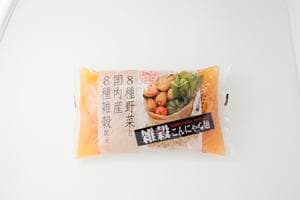
Freshly-cut noodles will have corners, as opposed to being tube-shaped, and Mr. Ishibahsi realised that these corners have a lot do to with ‘nodogahsi’. It was then that he decided to take on the task of finding a production method that would allow him to make konnyaku noodles with corners.“At first, I tried cutting rectangular-shaped noodles, but because the konnyaku was so soft I wasn’t able make them with corners.” From thereon in, Mr. Ishibashi continued to experiment, until finally he arrived at the idea of star-shaped konnyaku noodles.
By cutting them into star shapes, Mr. Ishibashi was able to make noodles that are perfect for holding sauce, and that also have a very distinct texture and ‘nodogahsi’.
In addition, he found a way of incorporating the three main colors of Western cuisine (red, green, and yellow) by kneading carrots, spinach and pumpkin into the dough, and thus produced brightly-coloured ‘Multigrain Konnyaku Noodles’.
The noodles do not need to be boiled, but simply run under cold water, and their convenience was a major factor in their positive reception board. The noodles have managed to become a popular product outside of Japan.
Ishibashiya produces konnyaku using old-fashioned techniques and natural ingredients. They use three times the ordinary amount of konnyaku tubers to produce their konnyaku and achieve the perfect texture. Ishinashiya’s konnyaku has also gained popularity eaten as ‘konnyaku steak’ in America.
Delicious Konnyaku Cannot be Made by Machines
Even in an age when mechanicalization and mass production continues to increase, Ishibashiya’s konnyaku continues to be hand-made by skilled professionals using the traditional ‘bata kneading’ technique. ‘Bata kneading’ involves placing the konnyaku into an iron box with paddles attached, and using it to knead the konnyaku thoroughly. This method is called ‘bata kneading’ because, to the Japanese ear, the sound the paddles make when kneading is ‘bata bata’.
This method takes a considerable amount of time and labour, and since it cannot be used for the mass-production of konnyaku there are only a small number of producers in Japan who use the technique.
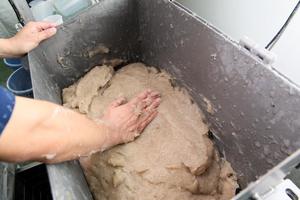
Thanks to their dedication to the quality of their products, Ishibashiya have both helped preserve this traditional konnyaku-making method and also established their own unique take on it based on many years’ experience. Ishibashiya have done research and analysed the production process (e.g. the speed and temperature at which konnyaku should be kneaded) and have written a manual for making konnyaku using the bata niri technique. Until this manual was produced, konnyaku makers relied solely on their own experience and intuition when using this technique, and the manual is now being used to train new workers.
Ishibashiya’s konnyaku is made using a painstaking process that involves lots of time and effort. When it is boiled and impurities have been removed, it could be called a work of art. In 2012, Mr. Ishibashi won the ‘4th Monozukuri Nihon Taishou’, an award given to exceptionally talented craftspeople by the Japanese Ministry of Economics, Trade and Industry.
Konnyaku made using the ‘bata kneading’ technique will contain unevenly-distributed air bubbles, but these bubbles are, in fact, the key to its deliciousness; the more air bubbles the konnyaku contains, the more it will absorb the flavor of what it is cooked in. In addition, the uneven distribution of air bubbles – which could not be achieved by a machine – gives the konnyaku a delicious and distinct texture.
In a country whose population continues to decrease, the economic situation of rural areas in Japan is declining rapidly. However, even in Japan, even in countryside areas, even ‘old-fashioned’ shops can, provided they have a good idea, innovate their businesses in line with the modern age and gain a worldwide customer base. A store that has been in business for over 130 years, Ishibashi Ya demonstrates something that is connected to the true essence of ‘business’ and can be looked upon as an example by all kind of businesses worldwide.



